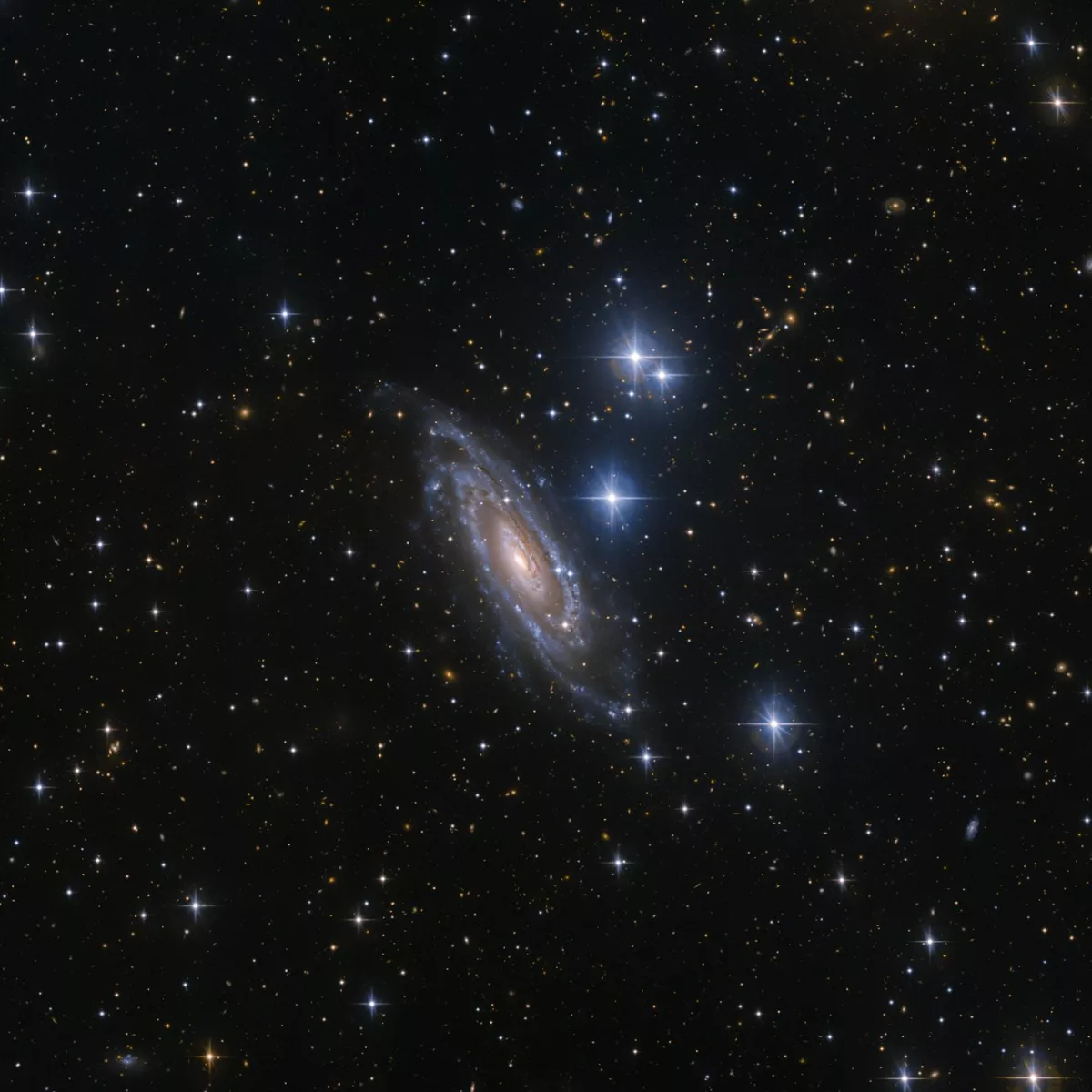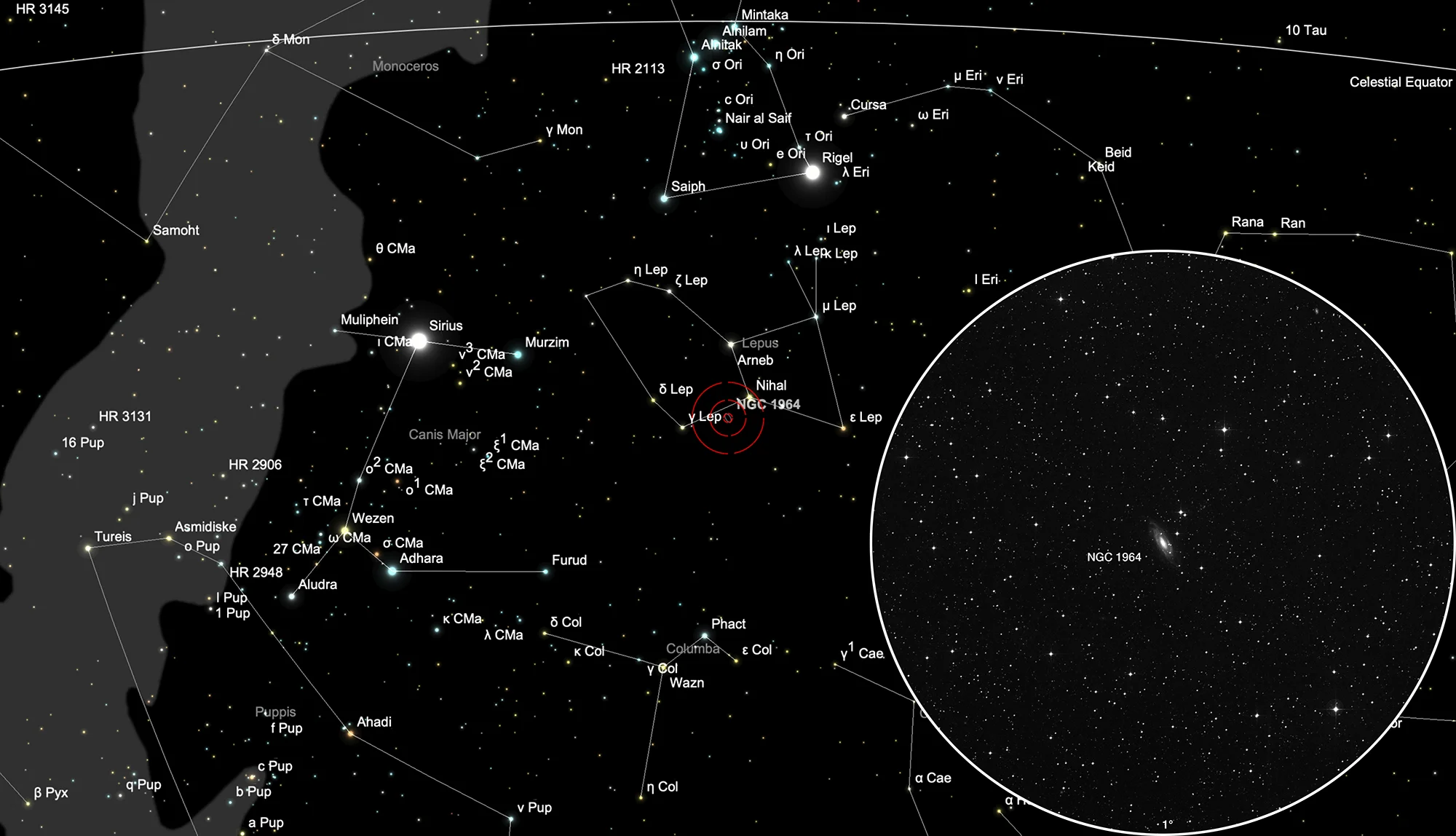Galaxie NGC 1964

Geschichte
Diese Galaxie wurde von Wilhelm Herschel am 20. Dezember 1784 mit seinem 18.7 Zoll Reflektor entdeckt. Er katalogisierte sie als IV 21 und merkte an: «Sehr klein, stellare, sehr helle Kernregion und sehr schwache Chevelure, nicht ganz zentral.» [463] Sein Sohn John beobachtete die Galaxie am 21. November 1835 (Sweep 647), katalogisierte sie als h 2860 und bemerkte: «Schwach, unregelmäßig rund, sehr plötzlich heller in der Mitte, zu einem Stern der 12. Größe, 2 oder 3 Sterne involviert und mehrere helle in der Nähe.» [11] Dreyer fügte die Galaxie 1888 seinem New General Catalogue hinzu. [313]
Physikalische Eigenschaften
NGC 1964 gehört zusammen mit NGC 1979 und IC 2138 zur Galaxiengruppe [CHM2007] HDC 362, die etwa 23 Mpc entfernt ist. [145]
| Bezeichnung | NGC 1964 |
| Typ | Gx (SBb) |
| Rektaszension (J2000.0) | 05h 33m 21.8s |
| Deklination (J2000.0) | -21° 56' 43" |
| Durchmesser | 5.6 × 1.8 arcmin |
| Fotografische (blaue) Helligkeit | 11.6 mag |
| Visuelle Helligkeit | 10.8 mag |
| Oberflächenhelligkeit | 13.4 mag·arcmin-2 |
| Positionswinkel | 32° |
| Rotverschiebung (z) | 0.005534 |
| Entfernung abgeleitet von z | 23.38 Mpc |
| Metrische Entfernung | 21.410 Mpc |
| Dreyer Beschreibung | F, vS, R, vsvmbM * 12, 3 st inv |
| Identifikation, Anmerkungen | WH IV 21; h 2860; GC 1170; ESO 554-10; MCG -4-14-3; IRAS 05312-2158 |
Auffindkarte
Die Galaxie NGC 1964 befindet sich im Sternbild Lepus, südlich von Orion. Die beste Zeit für die Beobachtung ist in den Monaten von August bis Mai.
